
Natural Dye Glossary
We have pulled together a glossary to support your Natural Dye explanations and directions for percentage of dye to use on your fibres. If you have prepared your cloth/textile/fibre by 1)scouring, 2)tanning & 3)mordanting then you can confidently move ahead and review your dye of choice for recommendations on WOF and the process by which to use each natural dye and commence Step 4 - Dyeing. If you need to revisit the Preparing your cloth/textile/fibre Steps 1 - 3 please visit here.
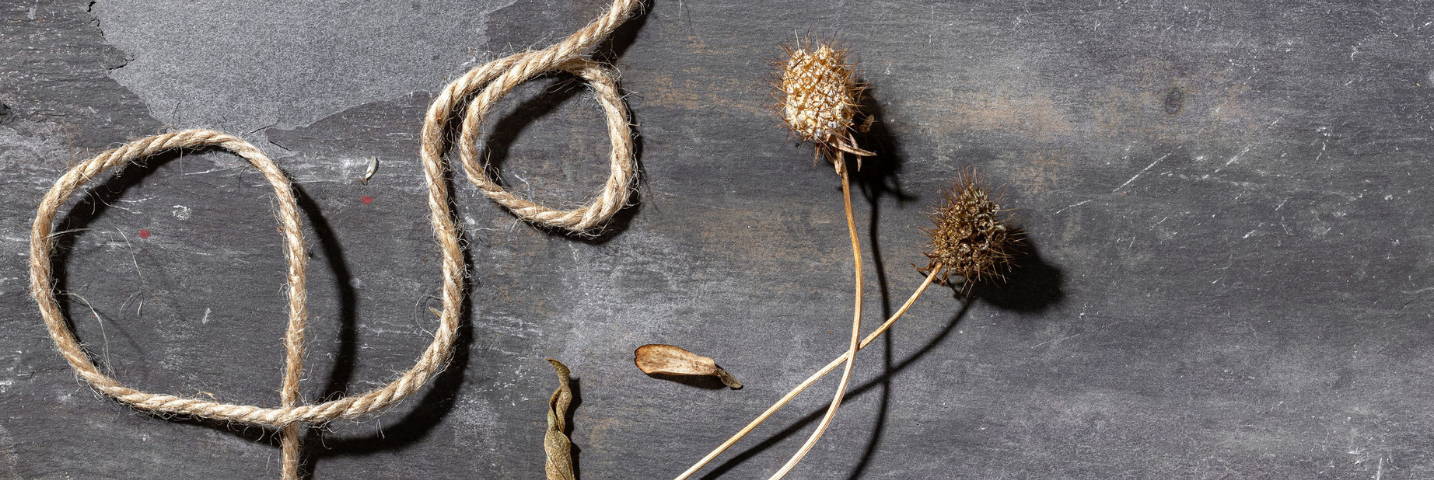
Alum and Alum Acetate (Mordants)
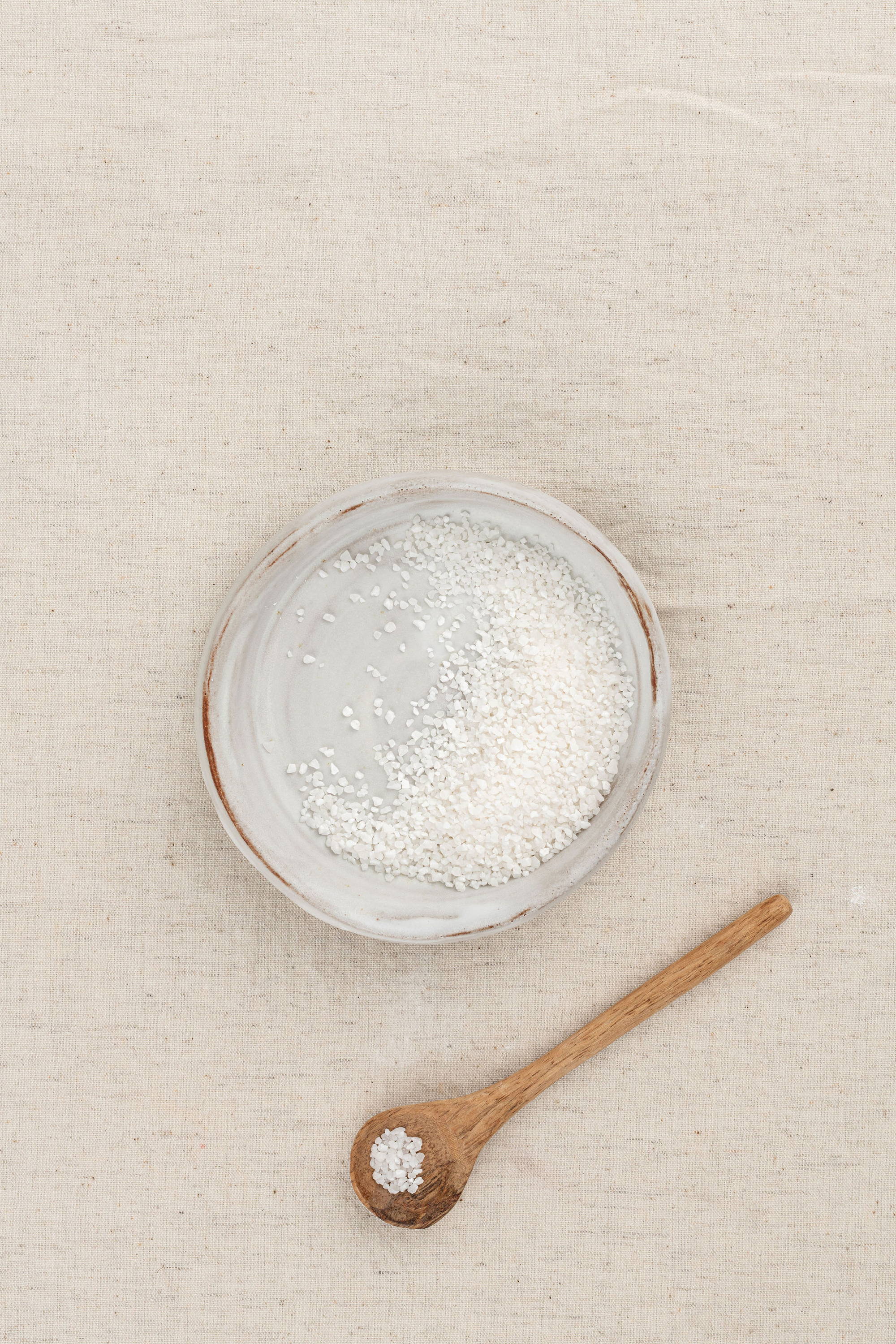
The two main mordants are Aluminium (Alum) and Aluminium Acetate.
Used to coat the external wall of fibre to allow dye particles to adhere for a stronger, richer dye outcome
Aids in light/wash fast properties.
Alkanet
Beautiful shades of violet.
Mordanting
Tannin 8% WOF cellulose fibres
Mordant 8% WOF alum acetate or 15% WOF alum
Dyeing
Cellulose fibres powder form :
30% WOF even moderate colour
70-100% WOF for deep purples and violets
Alkanet is non soluble, so needs to be soaked in alcohol and hot water (or methylated spirits) for 2-3 days to fully extract it's colour. When a deep colour appears, then add additional water to your vat.
Heat slowly to no more than 60degrees and exhaust this vat.
Alkanet has moderate light fastness.
Iron
2% WOF to achieve greys & greyish-violets.

Cream of Tartar (Potassium bitartrate)
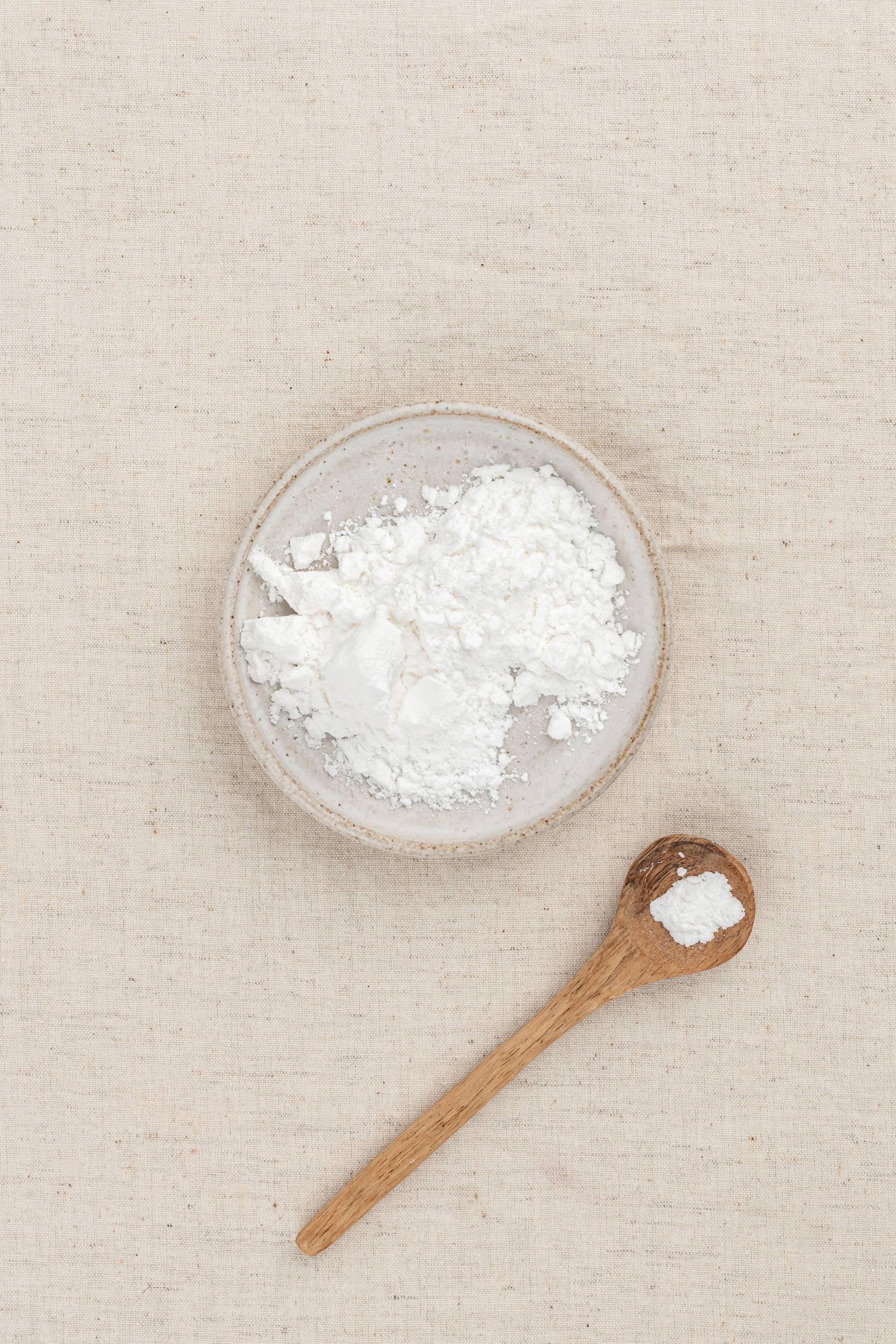
Primarily used with protein fibres to soften wools, brighten shades and promotes absorbency of mordant into wool fibres.
Not used on cellulose fibres and rarely used with silk.
4-6% WOF for best results.
Cutch (Catechu)

Brown ranging from soft delicate beige to rich luscious browns.
Mordanting
As Cutch is also a tannin, there is no need for tanning
Mordant 15% WOF alum or 8% WOF alum acetate
Dyeing
Cellulose fibres powder/extract forms :
20% WOF for light shades
30% WOF for moderate shade
50% WOF for deep shades
Protein fibres extract form :
15-30% WOF for moderate shades
Dissolve in small mixing vessel with boiling water.
Add to dye bath, stir well and add fibres.
Bring to boil, then simmer for 1-2hours.
Best results if vat left to sit overnight and used next day.
Excellent light/wash fast properties.
Iron
2-4% WOF to achieve deeper shades.
Cochineal
From soft champagne pinks to vibrant fuschia pinks, reds, oranges and purples.
Mordanting
Tannin 8% WOF cellulose fibres
Mordant with alum acetate at 8% WOF or alum at 15% WOF
Protein fibres 15% WOF alum acetate
Dyeing with insects
2% WOF for light shade
5% WOF for a good strength medium shade.
10% WOF for a super strong shade.
Note : use with discretion, strong colour.
Grind your insects to fine powder in either an electric grinder or mortar and pestle (only grind what you intend to use, store whole bugs)
Put powder in pot and cover with water before bringing to boil for 30 mins.
Strain through straining cloth, set aside extracted dye and return matter to pot and cover with more clean water and boil for another 30 mins.
Each time you do this save extracted dye in the same pot for your dye bath.
Repeat this process at least 2 - 3 times until after boiling water fails to extract more pigment.
Add wetted fibres to pot and heat to 30degrees for 30mins. Stir fibres.
Increase temperature to 30degrees and hold for 30-45mins.
Rinse in clean water and hand to dry.
Note : can keep remaining pulp in jar for future dye baths.
Cream of Tartar
4-6% WOF to achieve fuchsias to reds.
Iron
2-4% WOF to achieve purples.
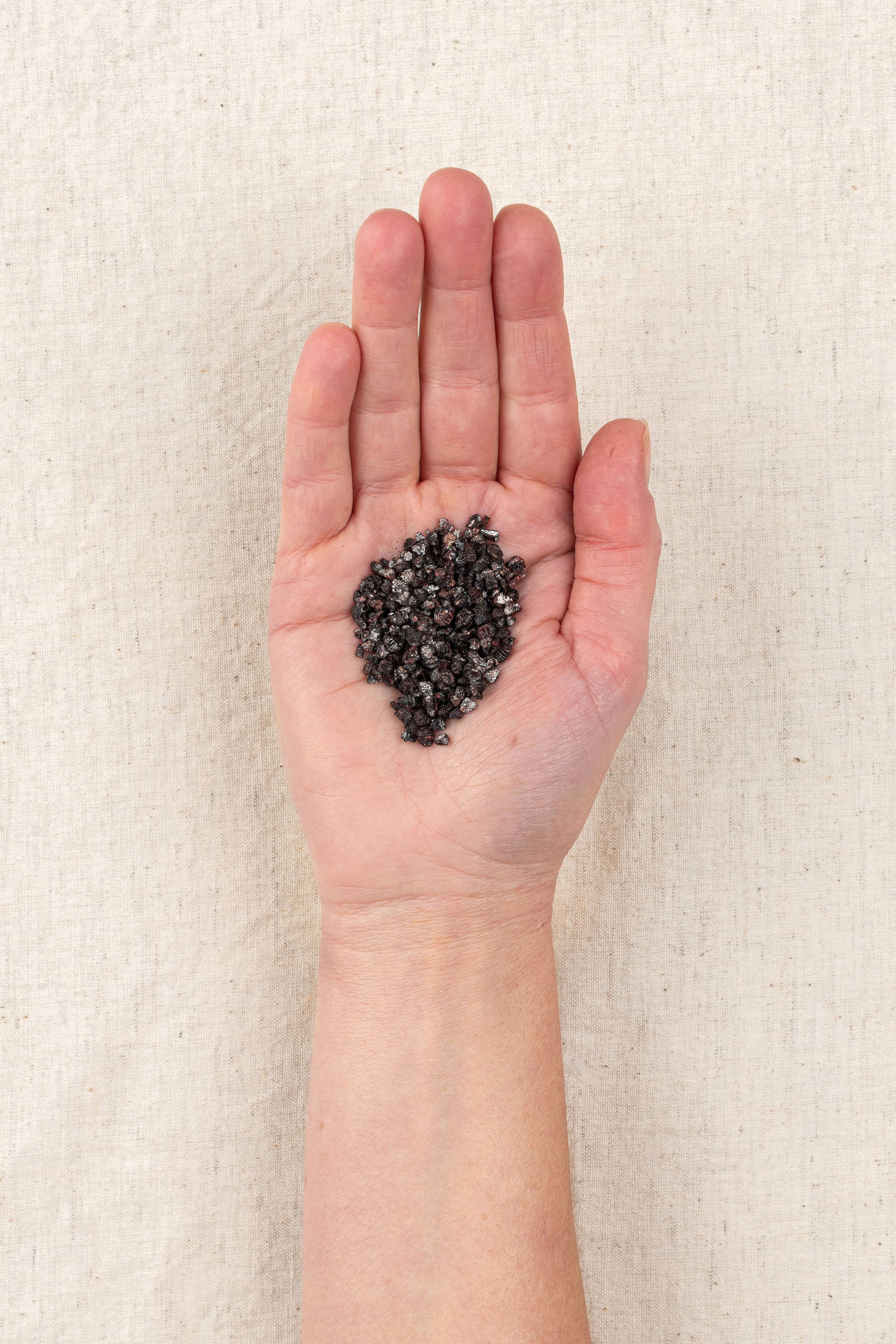
Gallnut (Quercus Infectoria)

Mordanting
Gallnut is primarily used as a tannin for cellulose fibres but can also be used as a dye. It is a clear tannin so ideal for creating lighter shades. Extract can be used to achieve beige to grey shades and is ideal if creating darker metal grey with a post iron bath.
Tannin :
10-15% WOF powder form
5-8% WOF extract form
Mordant 15% WOF alum or 8% WOF alum acetate cellulose & protein fibres
Dyeing
Gallnut will achieve beautiful soft shades of beiges
Cellulose fibres :
30 - 70% WOF powder form
15% WOF extract form
Protein fibres :
20-50% WOF powder form
10-15% WOF extract form
Dissolve dye in bowl with warm tap water, stir well to ensure dissolved.
Fill large pot with warm water from tap with enough water to cover your fibre.
Add dye solution to water to dilute stirring well.
Add wet fibre into pot and stir well. Heat gradually over 1 hour to 90degrees and hold for 1 hour ensuring you gently turn the fibre.
Rinse in clean water and dry.
Iron
2% WOF soft greys
4% WOF deeper greys
Note : Powder shown left
Himalayan Rhubarb (Rheum Australe or Rheum Emodi)
Wide range of golden brown tones in varying hues from browns to yellows.
Mordanting
Tannin 8% WOF
Mordant 12% WOF alum or 8% alum acetate cellulose fibres
Mordant 8% WOF alum protein fibres
Dyeing
10 - 30% WOF for medium shades powder form
5 - 10% WOF for deeper shades extract form
Dissolve dye in bowl with warm tap water, stir well to ensure dissolved.
Fill large pot with warm water from tap with enough water to cover your fibre.
Add dye solution to water to dilute stirring well.
Add wet fibre into pot and stir well. Heat gradually over 1 hour to 90degrees and hold for 1 hour ensuring you gently turn the fibre.
Rinse in clean water and dry.
Iron
2-4% for soft to deep olives/khakis.

Indigo
A dyer could spend a lifetime exploring the energy of Indigo, a lifetime becoming a master dyer of Indigo.
We admire & respect the work of Michael Garcia and his Indigo 1-2-3 VAT method. The 1-2-3 refers to one part indigo, two parts lime and three parts fructose.
See our Indigo Natural Dye Kit instructions for how to create your own Indigo VAT and scale up to 250g indigo, 500g lime & 750g fructose to produce a 30L VAT that you can store, re-use & keep alive.

Iron (Ferrous Sulphate)

Used to sadden or tone down colours as a post mordant.
Can also be used with tannins to create a variety of greys.
Colour outcomes will differ significantly if iron is used as a pre mordant rather than a post mordant.
Any use of iron greatly enhances the light and wash fast properties of your dye.
Tread carefully when using iron with protein fibres as it can make their handle brittle.
Best used on cellulose at 2-4% WOF.
Lac (Laccifer Lacca)
Beautiful reds to purples with iron.
Mordanting
Tannin 8% WOF
Mordant 8% alum acetate or 15% alum cellulose fibres
Mordant 15% WOF alum protein fibres
Dyeing
Cellulose fibres :
2 - 20% WOF powder form medium depth of shades
10 - 15% WOF extract form deeper shades
Protein fibres :
8 - 10% WOF medium depth of shades
Dissolve Lac in warm water then add to dye bath. Slowly bring to boil then simmer for 45mins.
For a more saturated and richer colour allow fibres to sit in dye bath overnight.
Lac is very sensitive to pH and has reduced light fast qualities on cellulose fibres but higher % WOF & 5% Cream of Tartar enriches pigment potential and can create beautiful reds, while Soda Ash (alkaline balance) will create enhanced purples.
Iron
2-4% WOF crimsons through to burgundy reds to deep purples.

Madder Rubia Cordifolia (Indian Madder)

Softest blush pink, many shades of brownish oranges through to deep luscious reds or deep brick reds.
Mordanting
Tannin 8% WOF cellulose fibres
Mordant 15% WOF alum or 8% WOF alum acetate cellulose fibres
Mordant 15% WOF alum protein fibres
Madder loves hard water so if your water source is softer try some calcium carbonate to harden your water to achieve the best reds possible.
Dyeing - Extract
Soak weighed madder for at least an hour before dyeing.
Heat the vat to 45-50degrees and hold that heat for 45mins.
Allow to cool for easier handling then strain through cloth or muslin. The strained dye is ready for your dye bath.
Add water if necessary for your fibre to move around.
Add fibre and again slowly return dye bath to 45-50degrees and hold for 45 - 60mins.
For a more saturated colour leave the fabric in dye bath overnight.
Note: Madder baths should be exhausted creating a wide variety of tones or keep dye material for a second bath or to add to bundle dye projects. Dry before storing.
Dyeing - Powder (Ground Madder root)
5 - 30% WOF for light to deep shades extract form
Dissolve dye in bowl with warm tap water, stir well to ensure dissolved .
Fill large pot with warm water from tap with enough water to cover your fibre.
Add dye solution to water to dilute stirring well.
Add wet fibre into pot and stir well. Heat gradually over 1 hour to 60degrees and hold for 1 hour ensuring you gently turn the fibre.
Rinse in clean water and dry.
Myrobalan
Myrobalan can be used as both a dye and a tannin for cellulose fibres. As a dye it creates beautiful soft buttery yellows.
Mordant
As Myrobalan is also a tannin, there is no need for tanning cellulose fibres
Mordant 15% WOF alum or 8% WOF alum acetate cellulose fibres
Mordant 15% WOF alum protein fibres
Dyeing
20 - 30% WOF for light buttery yellow shades
Dissolve dye in bowl with warm tap water, stir well to ensure dissolved.
Fill large pot with warm water from tap with enough water to cover your fibre.
Add dye solution to water to dilute stirring well.
Add wet fibre into pot and stir well. Heat gradually over 1 hour to 90degrees and hold for 1 hour ensuring you gently turn the fibre.
Rinse in clean water and dry.
Note : Myrobalan overdyed with indigo makes a beautiful teal colour.
Iron
2 -4% WOF creates soft olive green
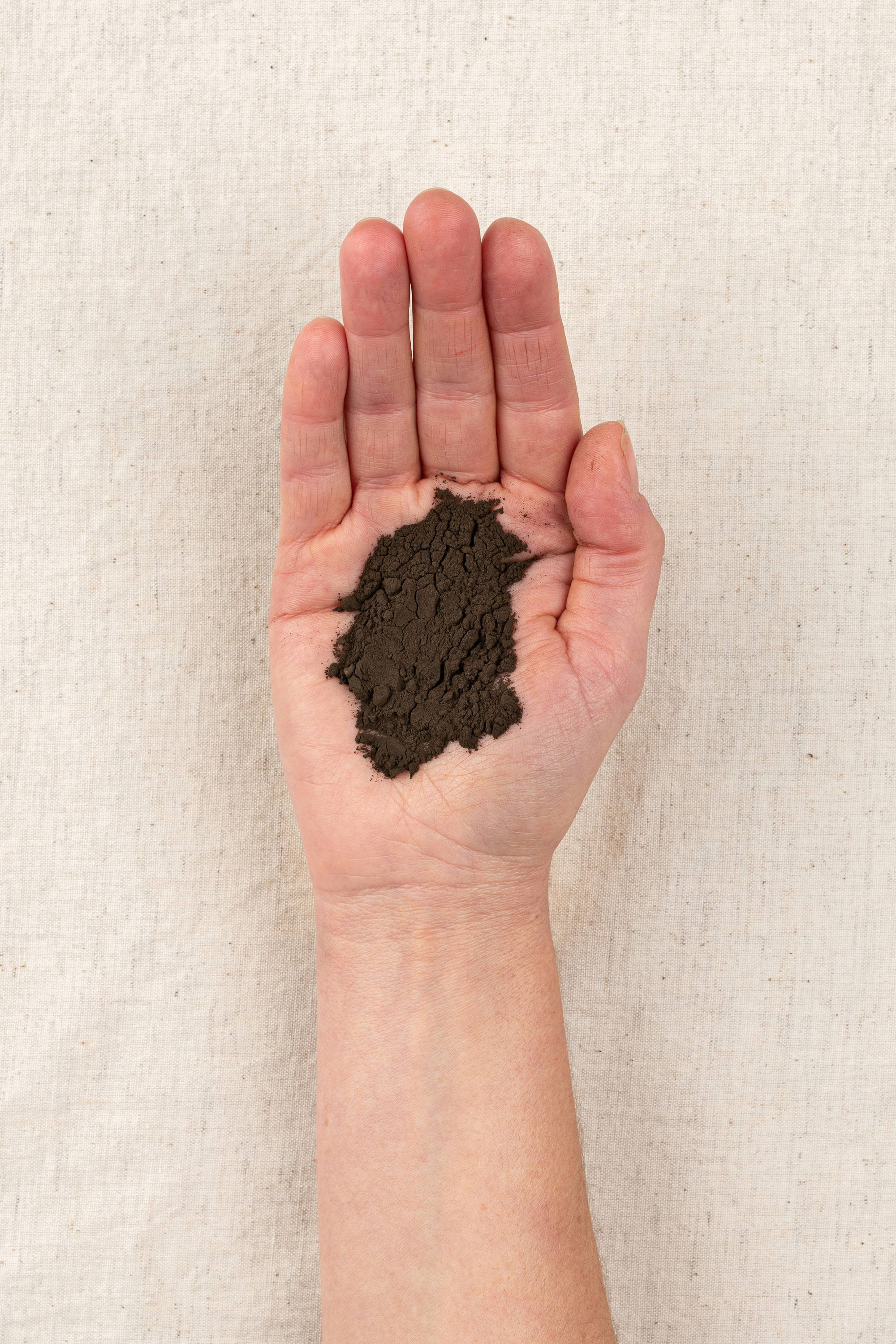
Marigold

Divine vibrant yellows to golds.
Mordanting
Tannin 8% WOF cellulose fibres
Mordant 8% WOF alum acetate or 5% WOF alum cellulose fibres
Mordant 15% WOF alum protein fibres
Dyeing
5-20% WOF for light to deep warm yellows
Dissolve dye in bowl with warm tap water, stir well to ensure dissolved.
Fill large pot with warm water from tap with enough water to cover your fibre.
Add dye solution to water to dilute stirring well.
Add wet fibre into pot and stir well. Heat gradually over 1 hour to 90degrees and hold for 1 hour ensuring you gently turn the fibre.
Rinse in clean water and dry.
Marigold's light fastness is low but pomegranate will increase it's vitality.
Iron
2-4 % WOF to create olive to khaki greens.
Pomegranate
Soft mild greens.
Mordant
As Pomegranate is also a tannin, there is no need for tanning cellulose fibres
Mordant 15% WOF alum or 8% WOF alum acetate cellulose fibres
Mordant 15% WOF alum protein fibres
Dyeing
10-30% WOF for medium shades of soft yellow
3-10% WOF for extract
Dissolve dye in bowl with warm tap water, stir well to ensure dissolved.
Fill large pot with warm water from tap with enough water to cover your fibre.
Add dye solution to water to dilute stirring well.
Add wet fibre into pot and stir well. Heat gradually over 1 hour to 90degrees and hold for 1 hour ensuring you gently turn the fibre.
Rinse in clean water and dry.
Note : Dye bath can often be reused. Allow fabric to sit in dye bath overnight for a more saturated colour. Use pomegranate with marigold dye baths to improve light & washfast performance.
Iron
2 - 4% will give soft olive & moss greens

Querbracho

Warm shades reddish browns, apricots, yellows.
Mordant
Tannin 8% WOF cellulose fibre
Mordant 15% WOF alum or 8% WOF alum acetate cellulose fibres
Mordant 15% WOF alum protein fibres
Dyeing
30% WOF warm medium shades of brown
Dissolve dye in bowl with warm tap water, stir well to ensure dissolved.
Fill large pot with warm water from tap with enough water to cover your fibre.
Add dye solution to water to dilute stirring well.
Add wet fibre into pot and stir well. Heat gradually over 1 hour to 90degrees and hold for 1 hour ensuring you gently turn the fibre.
Rinse in clean water and dry.
Note : For darker colours, it is recommended to give a second bath to oxidise dye.
Sappanwood
Soft to warm pinks and deep reds are achieved and with variation in pH levels oranges and luscious reds.
Light fast is fugitive though wash fast is reasonably good.
Mordanting
Tannin 8% WOF cellulose fibres
Mordant 15% WOF alum or 8% WOF alum acetate cellulose fibres
Mordant 15% WOF alum protein fibres
Dyeing
10 - 50% WOF powder for strong red/crimsons
5 - 15% WOF extract rang of reds
Note : Second vat gives ofter pinks.
Sappanwood is not unlike madder to process. It likes hard water, being brought to the boil slowly and not going over 70 degrees. Dyers can select to simmer for 1-2hours, sit overnight & strain b
Dissolve dye in bowl with warm tap water, stir well to ensure dissolved.
Fill large pot with warm water from tap with enough water to cover your fibre.
Add dye solution to water to dilute stirring well. At this stage you can choose heat to 70 degrees gradually and allow to simmer to 2hrs before straining or use as is.
Add wet fibre into pot and stir well. Heat gradually over 1 hour to 90degrees and hold for 1 hour ensuring you gently turn the fibre.
Rinse in clean water and dry.
Iron
2 -4% WOF to give soft mauves and lilacs.
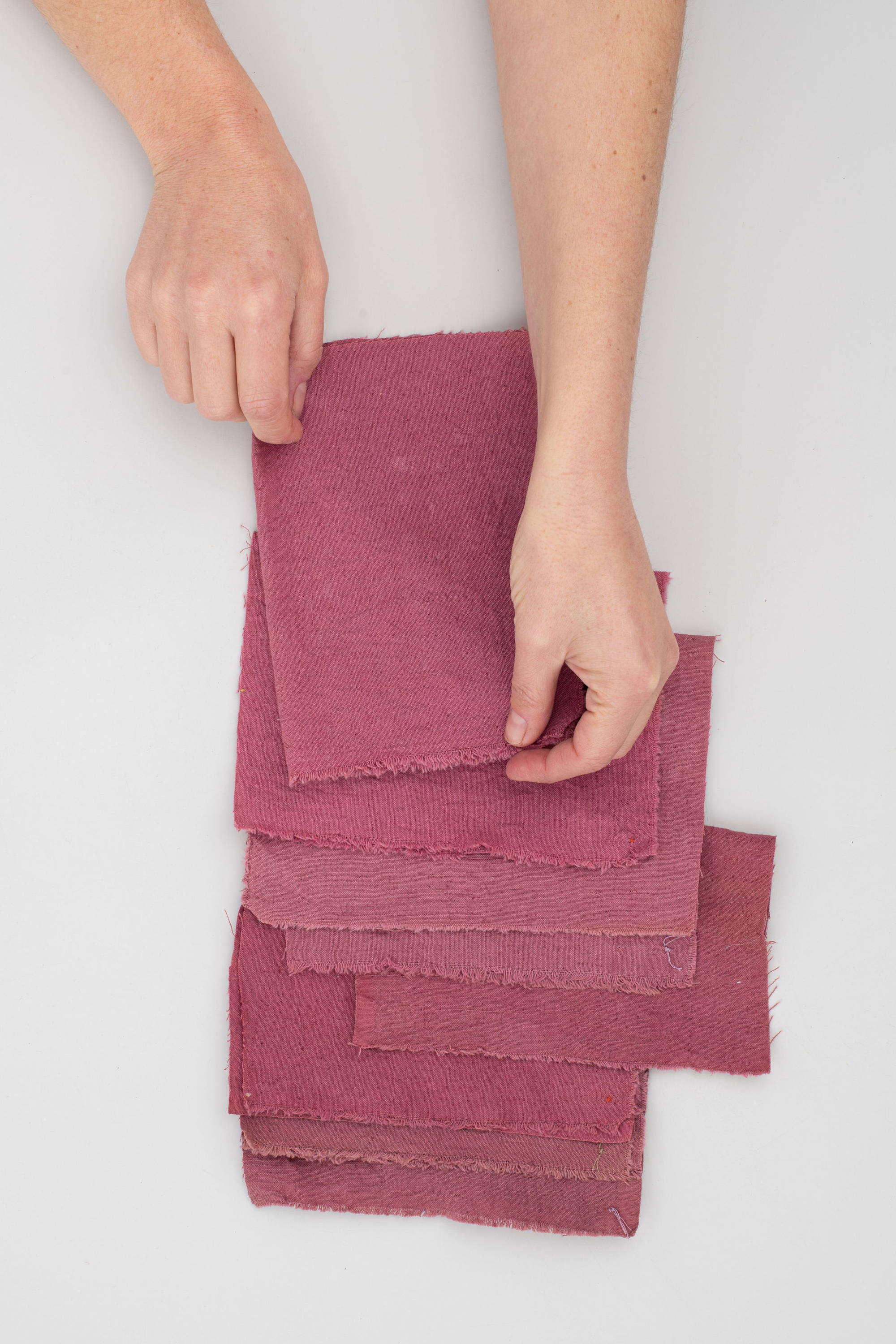
Tannins
Tannins are an important part of the process when dyeing cellulose fibres. The mordants - alum and alum acetate - do not adhere well to the external molecular structure of cellulose fibre. Therefore by first processing with a tannic acid you create an adhesive surface on the fibre for the alum and alum acetate to attach. For successful results it is important to get this order of process correct.
On the other hand protein fibres successfully connect with alum and alum acetate without the need of a tannic acid.
A way to look at it is that you are preparing the cellulose fibre to react with mordants and dye the same as a protein fibre would.
When starting on your dye process consider that your choice of tannin impacts on your final dye results. It is advisable to experiment as each tannin has its own colour and quality. Keep in mind also that many tannins are not just tannins. They can also be used as a dye just by using different quantities per weight of fabric (WOF).
You can choose to use either Myrobalan or Gallnut as a tannin and you can use either Powder or Extract versions for lighter shades. For darker shades we recommend using either Cutch or Walnut and again, powder or extracts work.
Walnut (Eastern Black) (Juglans Nigra)
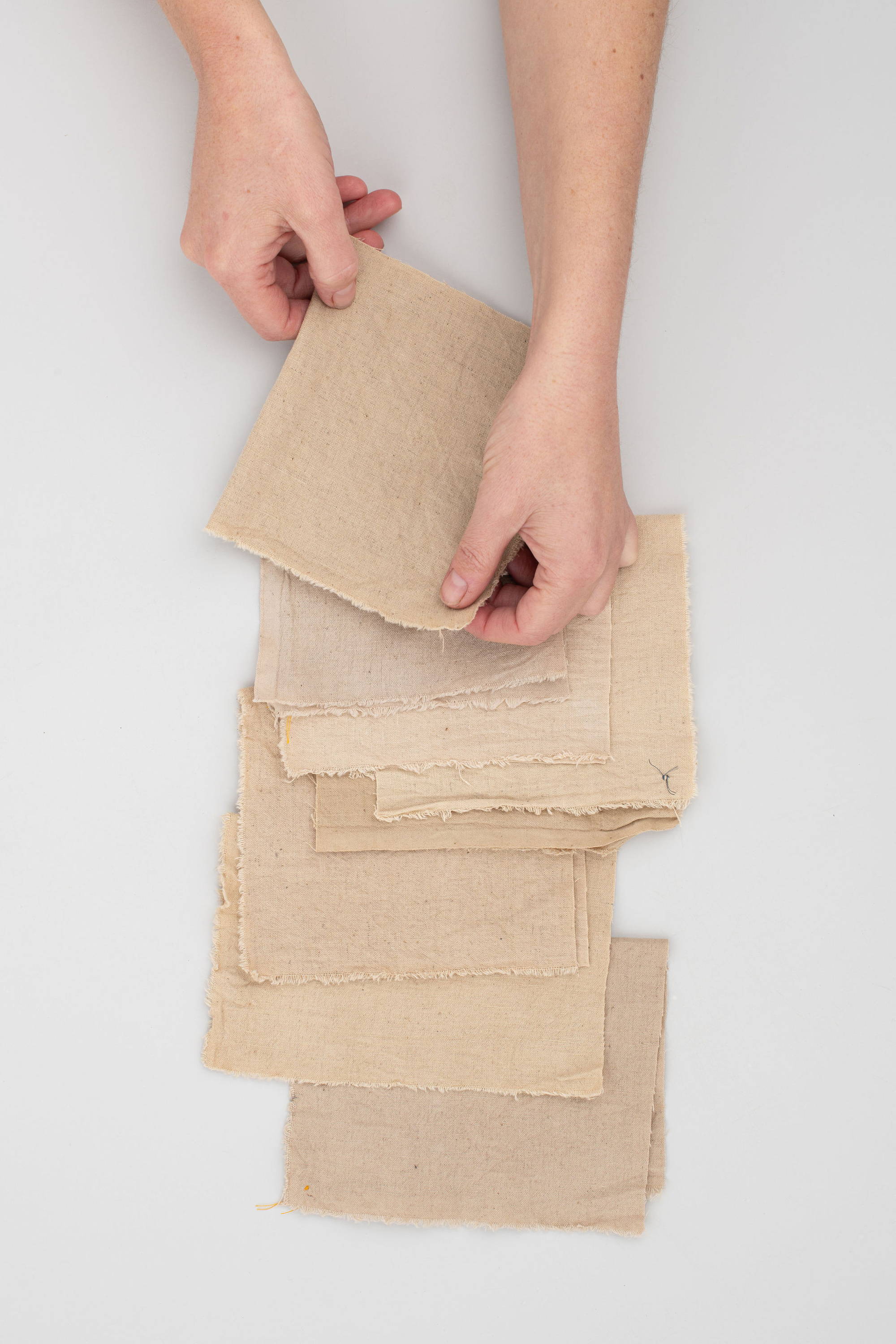
Soft warm beige tones.
Mordanting
As Walnut is also a tannin, there is no need for tanning
Mordant 15% WOF alum or 8% WOF alum acetate cellulose fibres
Mordant 15% alum protein fibres
Dyeing
75 - 100% WOF powder (ground walnut)
30 - 50% WOF extract
Dissolve dye in bowl with warm tap water, stir well to ensure dissolved.
Fill large pot with warm water from tap with enough water to cover your fibre.
Add dye solution to water to dilute stirring well.
Add wet fibre into pot and stir well. Heat gradually over 1 hour to 90degrees and hold for 1 hour ensuring you gently turn the fibre.
Rinse in clean water and dry.
For greater saturation you can leave the fibre to cool in the bath overnight and rinse the next day.
Very good light & wash fast properties.
Iron
2 -4 % WOF for rich greys & browns
Note: Powder shown left
Wattle (Bark of Acacia)
Soft shades of browns with grey tinge from extract & warmer brown tones from powder.
Mordanting
As Wattle also has high tannin properties there is no need for tanning
Mordant 15% WOF alum or 8% WOF alum acetate cellulose fibres
Mordant 15% alum protein fibres
Dyeing
20 - 100% WOF powder form
10 - 30% WOF extract form medium shades
Dissolve dye in bowl with warm tap water, stir well to ensure dissolved.
Fill large pot with warm water from tap with enough water to cover your fibre.
Add dye solution to water to dilute stirring well. At this stage you can choose heat to 70 degrees gradually and allow to simmer to 2hrs before straining or use as is.
Add wet fibre into pot and stir well. Heat gradually over 1 hour to 90degrees and hold for 1 hour ensuring you gently turn the fibre.
Rinse in clean water and dry.
Second & third bathes and leaving overnight is worthwhile as oxidising will give deeper shades.
Iron
2-4% WOF for deeper shades

Weld (Reseda Luteola)

Deep Yellows
Mordanting
Tannin 8% WOF cellulose fibres
Mordant 15% WOF alum or 8% WOF alum acetate cellulose fibres
Mordant 15% WOF alum protein fibres
Dye
2% WOF for ligth shade
8 - 10% WOF for medium shade
Dissolve dye in bowl with hot water, stir well to ensure dissolved.
Fill large pot with warm water from tap with enough water to cover your fibre.
Add dye solution to water to dilute stirring well. At this stage you can choose heat to 70 degrees gradually and allow to simmer to 2hrs before straining or use as is or let sit overnight.
Add wet fibre into pot and stir well. Heat gradually over 1 hour to 90degrees and hold for 1-2 hours ensuring you gently turn the fibre.
Rinse in clean water and dry.
Considered to have excellent light & wash fast properties.
Iron
2-4% WOF for olive greens
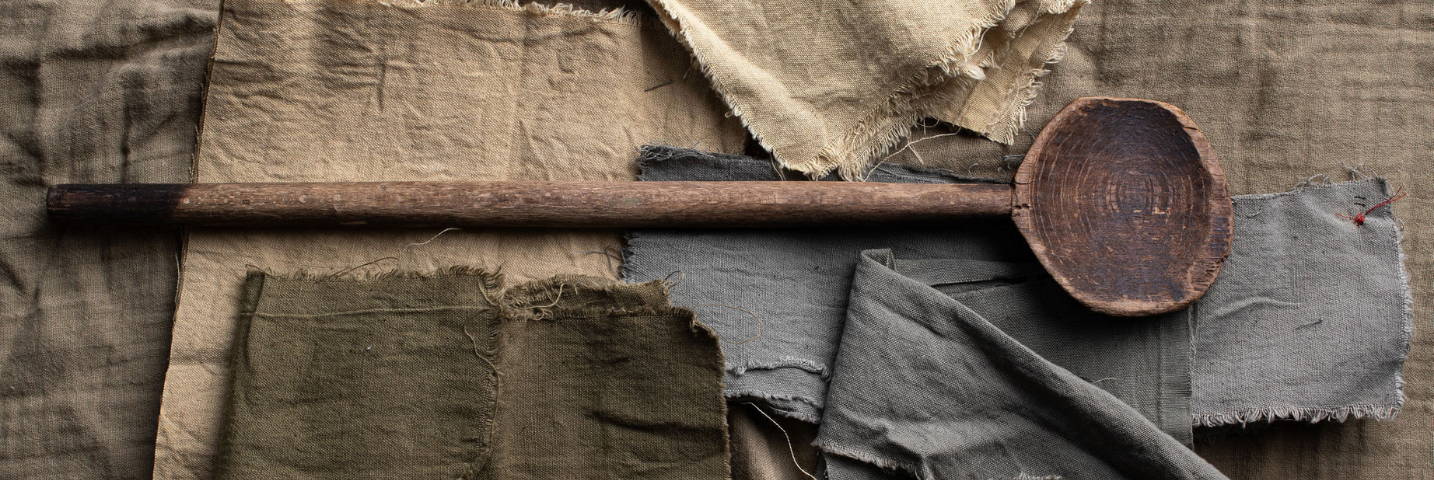
Benefits of Natural Dyeing
Nature is truly extraordinary, it's time to reconnect with it's wisdom and the traditional of natural dyes.
Like all journeys, your natural dye journey will be a personal one. We encourage you to dive deep into nature, to connect with the seasons experiencing all they have to offer and to learn from your journey, always respecting nature as the ultimate teacher.
Some benefits from dyeing with natural dye :
Creativity
Joy
Connecting to nature
Respect for the earth
A sustainable point of view
Supporting traditional wisdom & livelihoods
Time with family or friends
Sharing of wisdom through trial & error
Connecting to community
